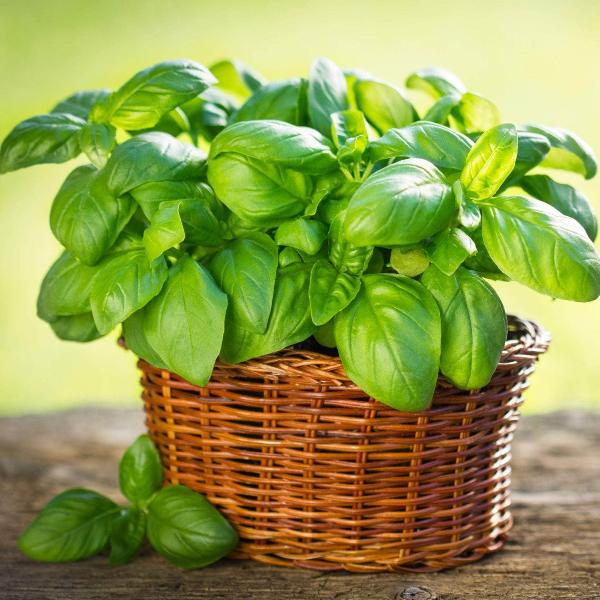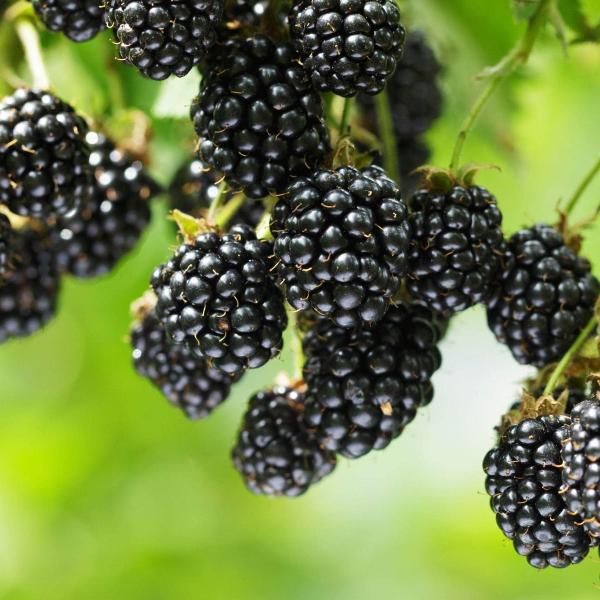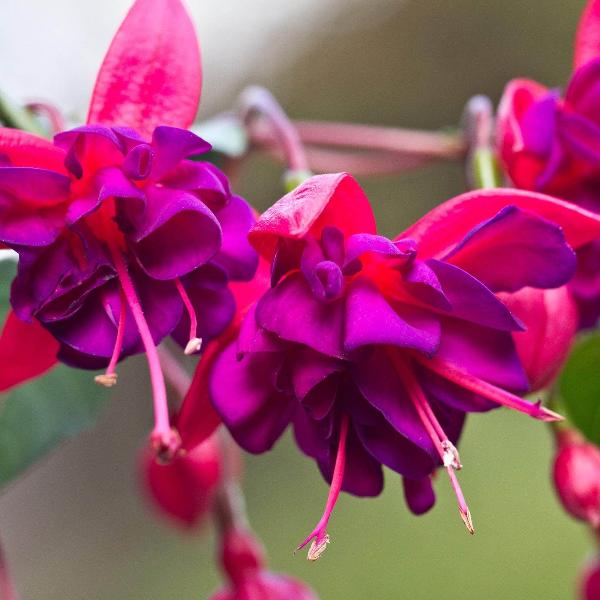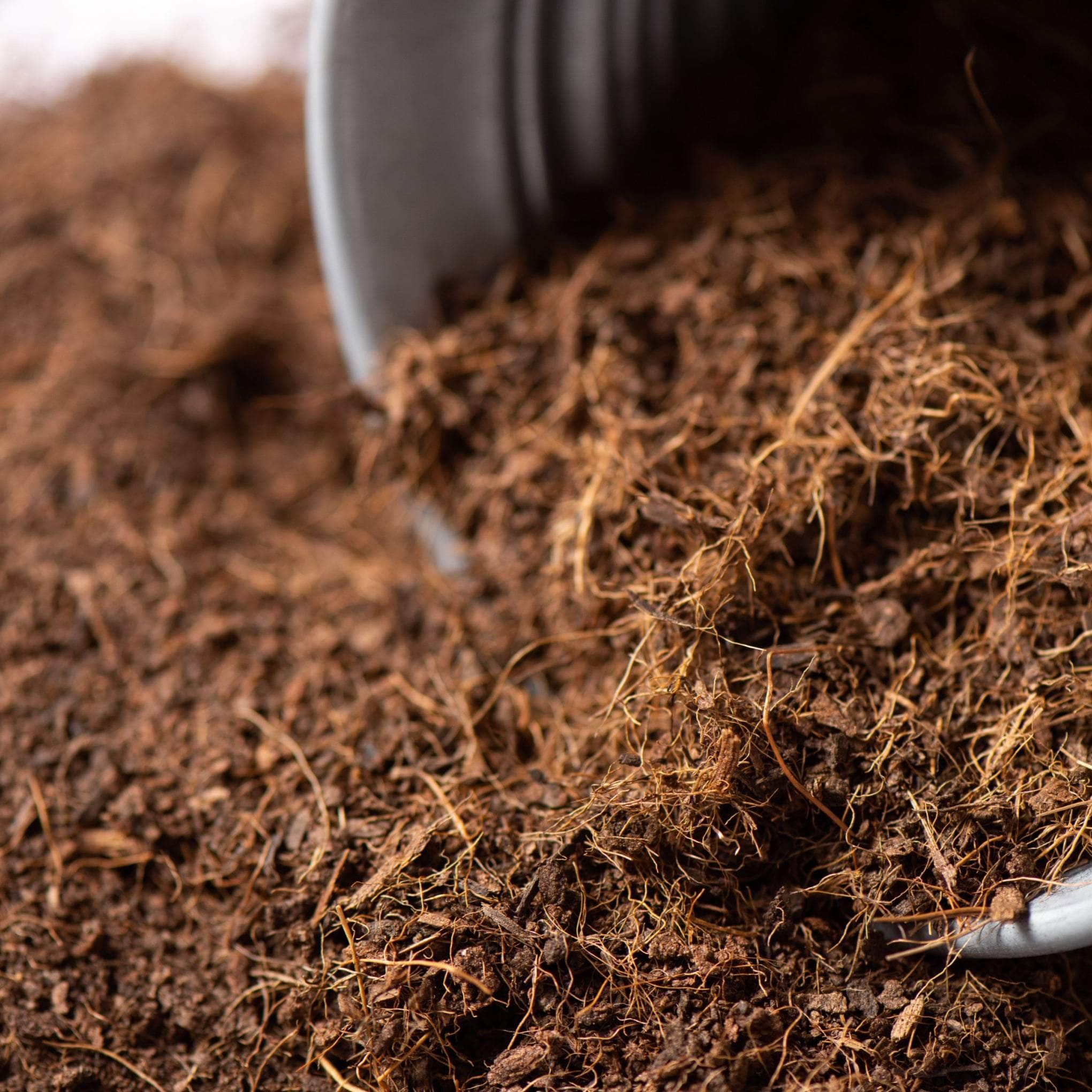The Ultimate Guide to Growing and Caring for Petunias
Welcome to our ultimate guide on how to grow petunias, the vibrant, versatile flowers that can transform any garden or balcony into a colourful paradise. Whether you're a seasoned gardener or a green-fingered novice, this guide will provide you with all the information you need to cultivate these beautiful blooms successfully. From understanding the basics of petunias and their different varieties, to mastering the art of planting and caring for them, we've got you covered.
We'll delve into the nitty-gritty of when and where to plant petunias and the best ways to water, fertilise, and prune them. But that's not all. We'll also help you troubleshoot common problems, guide you on where to buy the best petunias, and inspire you with ideas on how to display your petunias, whether in pots, containers, or as part of a stunning flower bed.
So, let's embark on this gardening journey together and make your garden a petunia paradise!
Understanding the Basics of Petunias

Petunias are a gardener's delight, offering a vibrant splash of colour and a delightful fragrance to any garden. Understanding the basics of petunias is essential to harness their full potential and ensure they thrive in your garden. This section will delve into the world of petunias, exploring their characteristics, growth conditions, and the care they require.
From their mature size to their grow season, petunias are a fascinating species. They have a high tolerance for various conditions and are a favourite among master gardeners. Every spring, these flowers burst into life, transforming gardens into a riot of colour. Let's explore the basics of petunias and how to care for them.
What are Petunias?
Petunias are popular flowering plants cherished by garden enthusiasts for their vibrant colours and delightful fragrance. Unlike many sensitive flowers, they thrive in a variety of conditions and light up your garden from spring until the first frost in autumn. Petunias come in many shapes and colours, offering a myriad of options to match any garden style.
One of the appealing attributes of petunias is their survival instinct. They're among the types of flora that can recover from rainfall and continue to flourish, a characteristic that was bred into newer varieties. Being perennial in nature, some types, such as the Surfinias, can also be grown annually from cuttings or new plants.
It's not just their visual beauty that captivates; petunias also tickle your senses with their charming fragrance. They are an amazing choice, particularly for home gardeners, due to their high tolerance, prolific growth, and their need for direct sunlight. Plus, their versatility makes them compatible for all locations – beds, borders, hanging baskets, and containers.
In summary, petunias are not only spectacular to the eye but also remarkably resilient. They are the epitome of beauty meeting endurance in the plant world. These magnificent blooms promise to transform any garden into a vibrant palette of colour.
Types of Petunias
Grandiflora Petunias: Known for their large, vibrant flowers, this variety is a favourite among master gardeners. However, they struggle with extreme heat or humidity, making them a better choice for cooler climates.
Multiflora Petunias: A smaller, yet hardy type of petunias, they have a high tolerance for wet conditions and produce numerous flowers every spring, enriching your garden with a sea of colours.
Floribunda Petunias: A seamless blend of Grandiflora and Multiflora, these hybrids share qualities from both varieties. They bring Grandiflora-sized flowers coupled with Multiflora’s weather tolerance.
Milliflora Petunias: Perfect for pots or small garden spaces, these compact, miniature petunias offer long-lasting, small-sized flowers. Despite their small size, mature plants produce an abundance of blooms.
Trailing or Spreading Petunias: Loved for their low-to-the-ground, spreading growth habit, these petunias make for excellent ground cover and pot edge spill-overs. They thrive in full sun and bloom consistently throughout the grow season.
How to Grow Petunias

Growing petunias can be a rewarding experience, especially when you see the vibrant blooms adorning your garden or balcony. This section will guide you through the process of how to grow petunias, from choosing the right time and place to plant them, to the steps involved in planting and raising them from seed.
Whether you're a seasoned gardener or a beginner, these tips will help you cultivate petunias that will thrive in full sun, whether you choose to grow them in the ground or in a pot. So, let's dive into the world of petunias and learn how to propagate these beautiful flowers successfully.
When and Where to Plant Petunias
Petunias are wonderful additions to any garden due to their vibrant colours and extensive flowering period. When it comes to knowing when and where to plant petunias, they call for careful attention.
As a starting point, the best time to plant petunias is in the spring, after the last frost. However, ensure the soil temperature is at least 60 degrees Fahrenheit to guarantee a healthy growth. Depending upon your region's climate, your local frost dates might differ, so it's best to plan accordingly.
Choosing an appropriate site for planting is also crucial. Petunias thrive well in full sun and require a minimum of 5 to 6 hours of sun exposure every day. If planted in shaded areas, their blooms won't be as abundant and the plant might look sparse.
The aspect of where to grow petunias is quite flexible. They can be grown in the ground or in pots. In either case, a planting hole of good depth is necessary, ensuring that the root ball is covered completely while planting.
The soil condition matters too. Petunias prefer fertile, well-drained soils for its optimal growth. Poor drainage can lead to root infections and limit the plant's growth. Therefore, whether you are growing them directly on the ground, or cultivating them in pots, make sure the soil meets these conditions. With these essential tips, your journey on how to grow petunias is set for a successful start.
Steps to Planting Petunias
Lay out the petunia seeds sparingly on top of damp potting soil or milled sphagnum moss. It's crucial to keep them moist but avoid making them soggy.
Gently press the seeds into the soil with your fingers before watering. Remember that petunia seeds are quite fine and need light to germinate.
Cover your planting container with clear plastic and store it in a warm place, ideally between 70 to 85 degrees F, and out of full sun.
Normally, the seeds should begin to sprout between 7 to 10 days after planting. Once the seedlings emerge, remove the plastic cover.
Transplant the seedlings into individual peat pots or packs once they have 3 true leaves. Ensure that you keep them well-watered and in a location with bright light until they are ready to be transplanted outdoors after the last frost.
Your petunias should be acclimatised, 'hardened', by gradually exposing them outdoors for several days before planting them permanently outdoors, but only when there is no chance of frost.
If the variety of petunias you are growing is not self-cleaning, remember to deadhead spent flowers. This helps to encourage more blooms and keep your plant looking neat and tidy.
By following these steps, you can successfully grow petunias - a beautiful addition to any garden.
Caring for Your Petunias

Caring for your petunias can be a rewarding experience, especially when you see them bloom in all their glory. These vibrant flowers, with their high tolerance for various conditions, can thrive in your garden with the right care.
Understanding how to care for petunias involves more than just watering and fertilising. It's about creating an environment where they can flourish, whether in a flower bed or a container. From protecting the plant from extreme weather to ensuring the top inch of soil is just right, every detail matters. Let's delve into the specifics of petunia care.
Watering and Fertilising Petunias
Petunias flourish remarkably in wet conditions as they can tolerate high water levels. If you're using a container, make sure it has excellent drainage to prevent waterlogging. They can also withstand heavy rainfall but never neglect to check the top inch of soil, if it feels dry, give your petunias a drink.
Proper use of plant food can help to sustain the lush growth of petunias. Consider using a liquid plant food or garden compost rich in organic matter. Petunias also excel exceptionally well in the sun, however, still aim to protect the plant from extreme weather conditions. Regularly using a flower bed can also aid its growth.
It's important to stress that the treatment of petunias should rail significantly onto the gardener's intuition. Observation, patience and spot-on timing deliver the best results as how to care for petunias is unique to each plant's growth response.
In summary, petunias have a high tolerance for various conditions hence optimising their care to each plant's needs always brings out the best in them.
Pruning and Deadheading Petunias
Pruning and deadheading are crucial methods when you think about how to care for petunias, particularly as we approach the midsummer phase. By this time, unattended petunias often appear rather leggy, their blossoms sitting at the tips of long, leafless stems. Through systematic and thoughtful reduction, we stimulate fresh growth.
A beneficial approach is to sever the shoots back to an approximation of half their original length. This instigates increased branching, leading to a more plush display of flowers. Once the pruning is done, ensure a generous application of plant food like garden compost or organic liquid plant food, along with a good watering regime to promote the flourishing of new blooms.
Even though at first sight, the plants could come across a bit ragged due to the pruning, they rapidly recover, presenting an appealing array of bloom colours. Deadheading is another practice that aids in maximising blooms and maintaining petunia's aesthetic appeal. This involves the removal of faded, old, or dead blossoms that might otherwise hinder the creation of new blooms by competing for the plant's food supply.
Common Problems with Petunias

Growing and caring for petunias can be a rewarding experience, but like any plant, they can encounter a few hiccups along the way. In this section, we'll delve into the common problems with petunias, from pest infestations to growth issues, and provide you with the knowledge to tackle these challenges head-on.
Understanding these problems is the first step towards becoming a master gardener. With the right plant care and grow conditions, you can ensure your petunias thrive throughout the grow season, even in the face of adversity.
Identifying and Treating Common Pests and Diseases
Growing and caring for Petunias may seem like a simple task, but they can often undergo common problems that can hinder their growth. These problems generally are related to both pests and diseases. They can be relatively harmless but if not treated correctly, they can cause potentially irreparable harm to your plants.
Among the types of small critters that can infest your Petunias, aphids and slugs often pose the biggest threat. They target the foliage and flowers sucking the sap from the plant, causing the flowers or leaves to wilt. However, such pests can be kept at bay with careful management and routine inspection of the plant.
Another issue is fungal diseases. Diseases are especially prevalent in high moisture areas, as Petunias retain a high tolerance for wet conditions. To prevent this, careful watering techniques should be employed to avoid wetting the foliage and flowers. This would protect the plant, especially in grow season when they are more susceptible to fungal diseases.
Turning to a master gardener can also provide more detailed guidance on pest prevention and disease treatment. Additionally, ensure the Petunias are exposed to enough direct sunlight as it favours their overall health and growth condition.
Addressing Common Growth Problems
Growing petunias could sometimes be challenging due to common growth problems associated with the plant. Fear not, as with a bit of expertise, these problems can be mitigated, ensuring the healthy growth and visual appeal of your petunias.
One frequent problem is wilted flowers or leaves. This may be a sign of a lack of water or exposure to excessive heat. Petunias prefer plenty of direct sunlight, but they do not fare well under extreme heat. To counter this, it is advisable to water your petunias regularly during the growing season, preferably in cooler periods of the day to avoid loss of water due to evaporation.
Another issue observed is the leaves of your petunias turning yellow, commonly due to overwatering or poor drainage. Petunias have a high tolerance for dry conditions, but prolonged wet conditions could result in root rot, causing yellowing of the leaves. Always ensure your petunias are planted in well-drained soil and never allow them to stand in water.
To further optimise your plant care, you may consider consulting with a master gardener. They can provide valuable insights into ideal grow conditions for petunias and guide you on how to protect the plant from potential issues during the grow season.
Displaying Your Petunias

Petunias are a gardener's delight, offering a vibrant splash of colour and a versatile range of display options. This section will guide you on how to showcase your petunias, whether in pots, containers, or incorporated into your flower bed. From the bushy petunias to the trailing varieties, we'll explore how to make the most of these beautiful blooms throughout the summer.
Whether you're looking to create a stunning window box display, a hanging basket overflowing with colour, or a flower bed that's the envy of your neighbours, petunias are the perfect choice. Let's delve into the world of petunias and discover how to display them to their best advantage.
Growing Petunias in Pots and Containers
Petunias bring joy with their infusion of colours and can be very well displayed in pots and containers, making them an asset in any gardeners world. With their immense versatility, you can opt for an array of types depending on the size of your container. Anticipate the mature size of the plant to avoid unnecessary repotting during a single growing season. The pot's material isn't a concern, but stay clear of dark colours to keep the roots cool.
Trailing petunias are a delight to have in hanging baskets or window boxes, as they have a tendency to trail along the edges, creating an enchanting cascade of colours throughout summer. On the other hand, bushier petunias provide a fuller look in pots, and some could even match the height of the container. These types bring an immediate and vibrant statement wherever they are placed.
Whether you choose to have your petunias in pots around the garden or clustered in a flower bed, you need to make sure they are cared for appropriately. They will need plenty of sunlight and a soil rich in nutrients, with good concern on the draining.
Keep in mind, petunias by nature are annual plants, so they may need to be replaced after a single windy summer season. But the beauty and enchantment they provide your garden with are worth the effort and time. Be ready to receive rave compliments from neighbours and visitors on your artful arrangement of these luscious blooms.
Incorporating Petunias into Your Flower Bed
Planting petunias in your flower bed can simply transform your garden into a riot of colour, particularly during the summer months. They are ideal as bedding plants due to their vibrant and plentiful blooms. With the right placement and care, they can add a touch of beauty to any garden.
There is indeed a wide variety of petunias including the bushy type and the trailing varieties, each suitable for different settings within a garden. The bushy petunias are best suited for planting directly in the flower beds. Meanwhile, trailing varieties work wonders for hanging baskets and window boxes.
Bear in mind, petunias thrive in areas with ample sunlight. So, ensure your flower bed gets plenty of sun to help your petunias flourish. It's this exquisite mix of sun, soil and summer bloom that makes petunias the luminous marvel of gardeners world.
Overall, whether you prefer the classic spread type or the more dynamic trail variety of petunias, incorporating these blossoms into your flower bed can significantly enhance the aesthetic appeal of your garden. With petunias in flower during the summer, your garden will inevitably become the envy of your neighbours.
Enjoying Your Blooming Petunias

In conclusion, growing petunias can be a rewarding experience, adding a splash of colour to your garden throughout the summer. Whether you choose to grow them in pots, hanging baskets, or directly in the ground, these vibrant flowers are sure to brighten up any space. Remember, petunias thrive in full sun and require well-drained soil to flourish.
Don't be disheartened if your first attempt doesn't go as planned. Gardening is a learning process, and each season brings new opportunities to perfect your skills. With patience, care, and a little bit of gardeners' world wisdom, you'll soon have a garden full of blooming petunias to enjoy.
So, why wait?
Start planning your petunia garden today. Whether you decide to raise them from seed or buy garden-ready plants, the joy of watching your petunias bloom is an experience not to be missed. Happy gardening!










